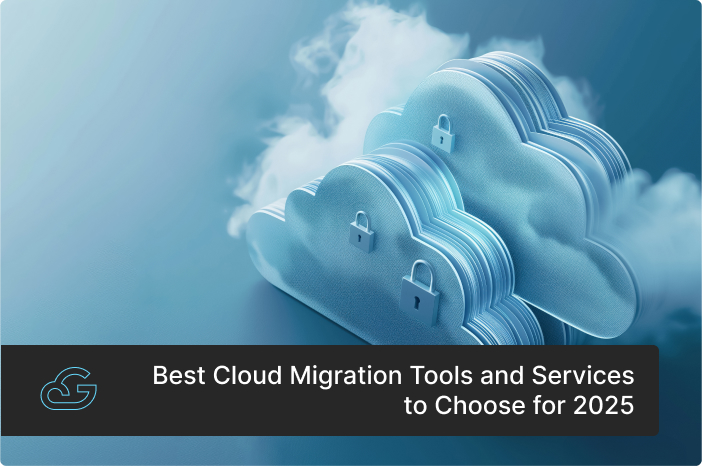Blogs / Cloud Migration
Best Cloud Migration Tools And Services To Choose In 2023
By
Vineeth Babu
Posted: April 1, 2023
• 4 Min Read
Are you prepared with your cloud migration roadmap and implementation strategy? Selecting the right tools marks the initial step toward bringing your vision to life. Cloud migration tools are technological facilitators, enabling organizations to efficiently transfer data, applications, or workloads from legacy infrastructure to the cloud. The key to success lies in having a team with the right technical expertise and skills to choose and integrate the best cloud migration solutions and tools tailored to your unique business requirements.
Let's explore some industry-standard cloud migration tools that help you successfully implement your migration process.
AWS Migration Tools
Azure Migrate Tools
Google Migration Tools
Carbonite Migrate
- AWS Migration Tools
-
Faster and secure data transfer
-
Scalable cross-functional solutions
-
Operates continuous data replication in multiple uses cases
-
Perform homogeneous and heterogeneous database migrations
-
End-to-end migration support
-
Support for huge third-party migration tooling ecosystem
-
Access to AWS advanced services including AWS Migration Acceleration Program, AWS Professional Services and AWS Managed Services
-
Robust automation capabilities to handle the migration of mass workloads and applications
-
Continuous monitoring and database targeting without interruptions
-
Insight-driven migration process to bring intelligent recommendations for performance optimization
-
Phased approach to migration process - Assess, Mobilize, Migrate and Modernize
- Azure Migrate Tooling
-
End-to-end cloud migration support
-
Wide range of integrated partner tools
-
Provides performance insight and built-in recommendations
-
Support for quick and cost-effective large-volume migration
-
Flexible approach to moving data into the cloud
-
Central hub to track migrations
-
Integrated Dashboard to get insight during discovery, assessment, and migration phases
-
Pre-migrations analysis through cloud readiness analysis, and app dependency visualization
- Google Migration Tooling
-
Simple and user-friendly migration operation
-
Built-in pre-migration validation system
-
Wide range of options to migrate applications databases, Oracle workloads, virtual machines, and hardware appliances
-
Security of data in transit through on-premises rollbacks
-
Real-time streaming for running workloads and data migrations
-
Post-migration performance optimization through insights
-
Rapid Assessment & Migration Program (RAMP) to streamline end-to-end migration
- Carbonite Migrate
-
Excellent customer support service
-
Performs unlimited testing of the new environment with no interruption to the current operations
-
Provides secure backup for home, professional, and enterprise solutions
-
End-to-end cloud migration support
-
Flexibility to choose the migration pathway – Automated workflow or Do it Yourself (DIY) blueprints
-
Provide insights from the console to optimize performance
Being the pioneer in the public cloud market, AWS cloud migration tools offer a range of reliable enterprise migration software including AWS Application Migration Service and the AWS Server Migration Service. It provides support for migrating workloads from various environments such as .NET applications, Microsoft, VMware, SAP, and mainframe infrastructures. One of the key benefits is that you don’t need to make any changes to the source databases or download any other apps or drivers ensuring minimal disruption or downtimes.
Core Features:
AWS Migration Tools and Service
Azure Migrate is a unified cloud migration service from Microsoft, the first cloud service provider to support the new international standard for cloud privacy- ISO 27018. It supports cloud migration from virtual machines and physical servers and cloud-to-cloud implementations. The Azure migration tooling consists of three categories of tools designed to manage and track all migrations. It also provides a central hub to track and execute on-premises data migration allowing teams to assess, execute, and track their migration.
Core Features
Azure Migration Tools and Service
Google Cloud offers a comprehensive set of migration services and tools for enterprises, enabling the migration of critical applications, data, and infrastructure while ensuring scalability, high uptime, and data security. In addition to a range of migration options for workloads like MS SQL servers and Oracle, GCP also offers dedicated tools for various data and application migration scenarios. Harnessing the power of AI, GCP tools help automate repeatable migration tasks.
Core Features:
Google Migration Tools and Service
Carbonate Migrate is standalone tool that provides advanced cloud backup solutions that allow scalable migration to any physical, virtual, or cloud environment. Its structured and repeatable migration process replicates data continuously from the source to reduce downtime while ensuring data security. With support over numerous operating systems, native hypervisors, and cloud platforms, this tool allows you to efficiently migrate all your essential data to the cloud.
Core Features:
How Gsoft Helps You To Choose The Right Cloud Migration Tools?
Gsoft’s specialist cloud migration experts analyze your unique business needs and recommend the most optimal tools based on the current state of your infrastructure. Below are some of these key drivers.
Support For Pre-Migration Assessment
Carry out a pre-migration assessment to foresee the effectiveness of the selected cloud migration and identify any problems that might prevent the process from going as planned.
Compatibility With The Provider’s Cloud Server
This is a crucial factor to consider as cloud migration entails various workstreams such as moving data from on-premises to the cloud, between public and private clouds, and between public clouds.
End-to-end migration support
Assess the required level of support, including consulting, development, testing, and integration to determine the necessary effort and establish realistic expectations for all stakeholders.
Support for migrating the whole gamut of data
Examine the tool’s ability to migrate an organization’s entire data source including applications, workloads, and databases.
UI/UX development support
The migrated applications should adhere to modern UI/UX design principles for better usability. This approach is crucial for maximizing user engagement and satisfaction post-migration.
Gsoft’s cloud migration services help you streamline your migration journey by clearing up uncertainties and choosing the right tools. Get a free cloud consultation today if you want to learn how these tools fit into your business’s unique needs.


Get Know More About Our Services and Products
Reach to us if you have any queries on any of our products or Services.











